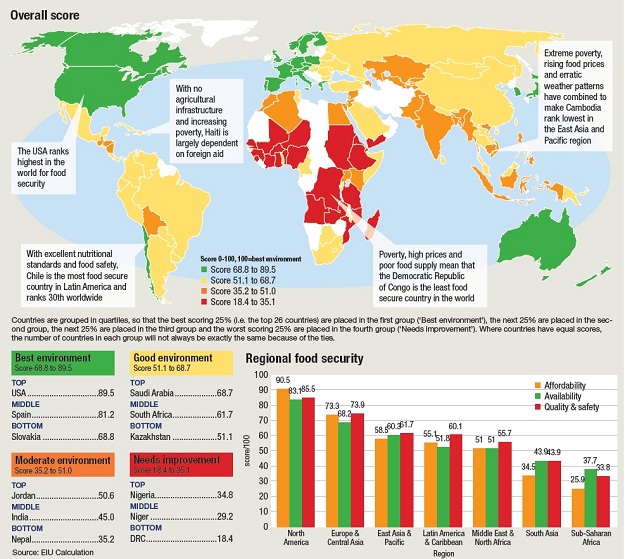The contrast between surplus and subsistence around the world is most sharply delineated in the everyday availability of food. Some regions can count on plentiful supplies, but others feel the consequences of erratic weather and unequal distribution more directly.
North America, Europe and Central Asia are the world’s most food secure regions, while other parts of the world show varying degrees of insecurity, according to the Global Food Security Index 2012 prepared by the Economist Intelligence Unit (EIU).
The index assesses food affordability, availability and quality. Erratic weather, rising food costs and rapidly expanding populations continue to put pressure on the world’s existing food management systems.
Sub-Saharan Africa is the least food secure region, with the Democratic Republic of Congo finishing at the bottom of the overall index. The accepted average daily requirement is 2,300 calories but people living in least developed countries (LDCs) typically consume around 1,100 calories a day. Cereal yields in LDCs are approximately one third of those achieved by developed countries.
In Haiti, where 80 percent of the population is living below the global poverty line, widespread deforestation and frequent natural disasters have meant that much of the population is dependent on food aid.






